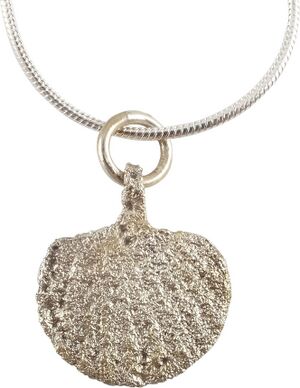Blackfront Amulet: Difference between revisions
Pretzelbomb (talk | contribs) (Created page with "The Blackfront Amulet is the name given to an early steel amulet discovered in Durnstaal in 1988 by middle school teacher Alexander Vic. The amulet has been dated to the 1...") |
No edit summary |
||
| Line 3: | Line 3: | ||
The amulet was first discovered in Blackfront Cave by Alexander Vic on September 5th, 1988, a middle school teacher at Denisa-Petra Middle School. Vic, who had been searching for samples of basalt for his science class, discovered the amulet within a pile of loose rocks within the cave system. Originally believing it to be a piece of scrap metal, he quickly realized it was a historical artifact of some kind and brought it back to the school for closer inspection. Soon, teachers from nearby high schools and colleges came to investigate the artifact, until it was eventually dated by the [[Metallurgy Historical Society]] who purchased it from Vic for P£1500 before donating it to the [[Eltershafen|National History Museum]] in 1996. | The amulet was first discovered in Blackfront Cave by Alexander Vic on September 5th, 1988, a middle school teacher at Denisa-Petra Middle School. Vic, who had been searching for samples of basalt for his science class, discovered the amulet within a pile of loose rocks within the cave system. Originally believing it to be a piece of scrap metal, he quickly realized it was a historical artifact of some kind and brought it back to the school for closer inspection. Soon, teachers from nearby high schools and colleges came to investigate the artifact, until it was eventually dated by the [[Metallurgy Historical Society]] who purchased it from Vic for P£1500 before donating it to the [[Eltershafen|National History Museum]] in 1996. | ||
[[Category:Durnstaal]] | |||
Latest revision as of 20:15, 21 November 2020
The Blackfront Amulet is the name given to an early steel amulet discovered in Durnstaal in 1988 by middle school teacher Alexander Vic. The amulet has been dated to the 1800's B.C. and represents the oldest known example of worked steel. It is named after Blackfront Cave, a small sea cave located on the coast of Lake Gravenna just south of Durnen in which the amulet was found. It currently resides in the Museum of National History in Eltershafen.

Potassium-Argon dating estimates the amulet's origin to around the 1800's B.C. The culture of origin is unknown, although it is believed to have been lost during a crossing of Lake Gravenna some time between 1700 B.C. and 1400 B.C. before eventually washing up in Blackfront Cave. The amulet itself is constructed of high-carbon cast iron constituting a low-quality tool steel. While brittle and difficult to work, this steel's luster led it to be formed into a piece of jewelry. An amulet such as this would have denoted high status or wealth and likely been passed down as a family heirloom.
The amulet was first discovered in Blackfront Cave by Alexander Vic on September 5th, 1988, a middle school teacher at Denisa-Petra Middle School. Vic, who had been searching for samples of basalt for his science class, discovered the amulet within a pile of loose rocks within the cave system. Originally believing it to be a piece of scrap metal, he quickly realized it was a historical artifact of some kind and brought it back to the school for closer inspection. Soon, teachers from nearby high schools and colleges came to investigate the artifact, until it was eventually dated by the Metallurgy Historical Society who purchased it from Vic for P£1500 before donating it to the National History Museum in 1996.